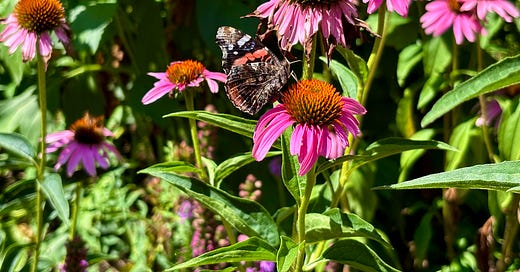I’m careful not to trip as I make my way up to the podium. I look out at the large crowd, hold up the award I’ve just been presented and exhale deeply. I’m temporarily speechless but, eventually, I begin –
“This dream began on a summer day in 2020 when I covered our lawn with the very first rectangle of cardboard. That was my first of many days of sheet …
Keep reading with a 7-day free trial
Subscribe to Rootbound to keep reading this post and get 7 days of free access to the full post archives.




